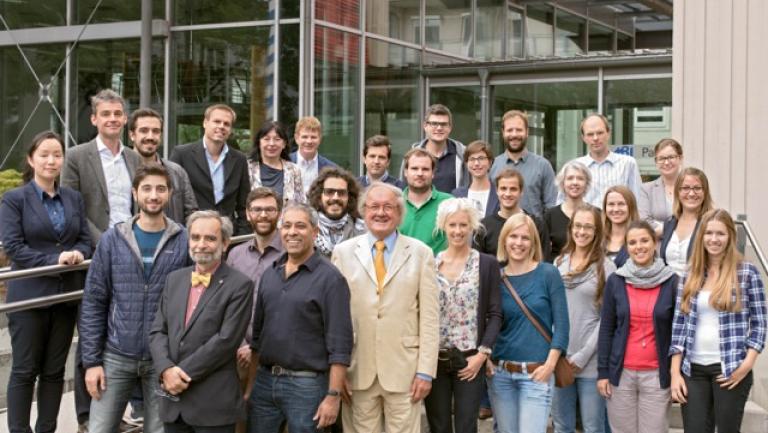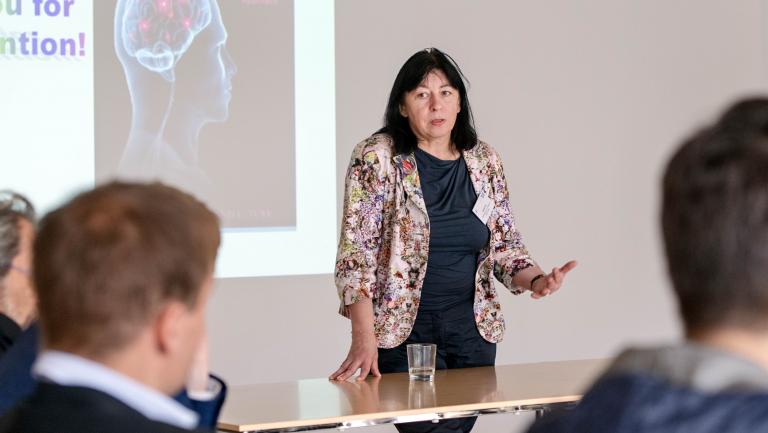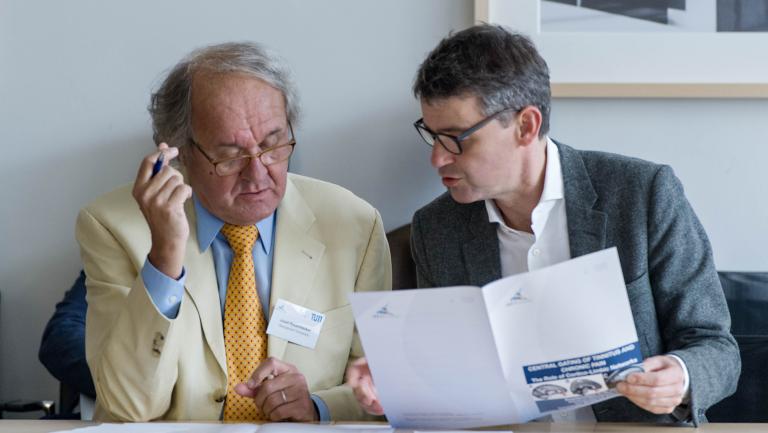Munich Workshop on Tinnitus and Chronic Pain 2015
Organizer:
Prof. Josef P. Rauschecker
Laboratory of Integrative Neuroscience and Cognition, Georgetown University
TUM-IAS Hans Fischer Senior Fellow
Co-organizer:
Prof. Markus Ploner
Neuroimaging Center at Technische Universität München (TUM-NIC)
Summary
Recent research using multimodal neuroimaging in humans has revealed an astonishing convergence of brain systems involved in tinnitus and chronic pain. Dysregulation of cortico-limbic networks, including medial prefrontal cortex and nucleus accumbens, seems to be at the heart of both disorders, which are common comorbidities of PTSD and depression. Understanding these gating mechanisms and the origin of their malfunction will be a big step towards treatment and cure of these pervasive disorders.
Objectives
Continuously, our brain evaluates the salience of incoming sensory information, selects the important signals and suppresses those that are not relevant for a given task. Top-down projections from the prefrontal cortex to the striatum provide one of the essential neural substrates for such gating functions inherent in what we often refer to as “attention” or “cognitive control”. Recent evidence, mostly from neuroimaging studies in humans, suggests that impairment of these gating mechanisms may ultimately be responsible for common “sensory” disorders like tinnitus and chronic pain. A dysregulation of cortico-striatal networks, especially between medial prefrontal cortex and nucleus accumbens, seems to be at the heart of these disorders, as irrelevant hyperactivity that is internally generated in sensory regions as a result of lesion-induced plasticity is not suppressed. This mini-symposium reports, reviews and discusses findings about brain regions and circuits that are involved in the impaired gating process in both tinnitus and chronic pain and how this dysfunction leads to these, often chronic and highly disabling, sensory phantom perceptions.
Timeliness
Currently a big rethinking process is going on in our understanding of tinnitus and chronic pain. Both fields originally focused on anomalies in the peripheral system, then on primary sensory cortex, before looking at brain regions outside their specific senses. The last few years witnessed an increasing number of studies focusing on gating mechanisms responsible for the perception of these abnormal sensations, involving highly integrated global network activities instead of localized activity.
Appeal
Besides its obvious clinical importance, the symposium will appeal to basic neuroscience because it discusses mechanisms of fundamental relevance for sensation, perception and higher cognitive function. It illustrates central aspects of plasticity in the auditory and somatosensory systems and stages a direct comparison of their most prominent disorders. One of the really astonishing aspects is the convergence of mechanisms emerging from research done completely independently in both fields.
Clinical relevance
Tinnitus and chronic pain are both frequent medical conditions that impair quality of life for millions in the US and around the world. About 25% of the adult population has experienced one or more acute tinnitus episodes and about 10% report having permanent disabling tinnitus. Pain affects more Americans than diabetes, heart disease and cancer combined. Both disorders are among the most common causes of long-term disability.








